Sean Gasiorowski
SLAC National Accelerator Laboratory, Menlo Park, CA, USA
Efficient Nudged Elastic Band Method using Neural Network Bayesian Algorithm Execution
Dec 17, 2025Abstract:The discovery of a minimum energy pathway (MEP) between metastable states is crucial for scientific tasks including catalyst and biomolecular design. However, the standard nudged elastic band (NEB) algorithm requires hundreds to tens of thousands of compute-intensive simulations, making applications to complex systems prohibitively expensive. We introduce Neural Network Bayesian Algorithm Execution (NN-BAX), a framework that jointly learns the energy landscape and the MEP. NN-BAX sequentially fine-tunes a foundation model by actively selecting samples targeted at improving the MEP. Tested on Lennard-Jones and Embedded Atom Method systems, our approach achieves a one to two order of magnitude reduction in energy and force evaluations with negligible loss in MEP accuracy and demonstrates scalability to >100-dimensional systems. This work is therefore a promising step towards removing the computational barrier for MEP discovery in scientifically relevant systems, suggesting that weeks-long calculations may be achieved in hours or days with minimal loss in accuracy.
Implicit Neural Representation as a Differentiable Surrogate for Photon Propagation in a Monolithic Neutrino Detector
Nov 02, 2022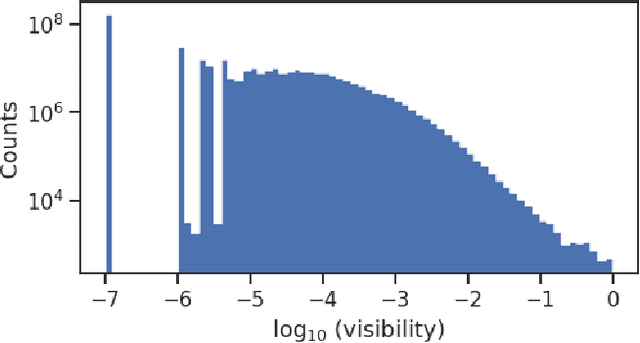
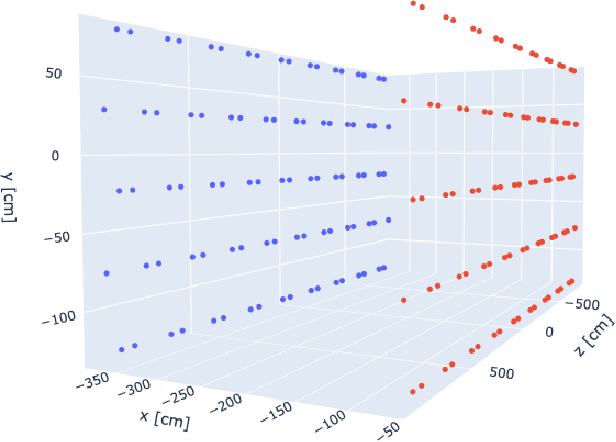
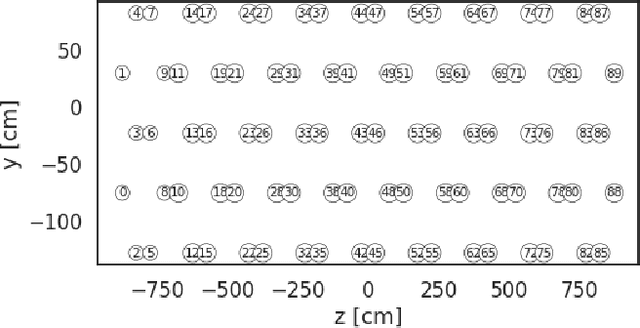
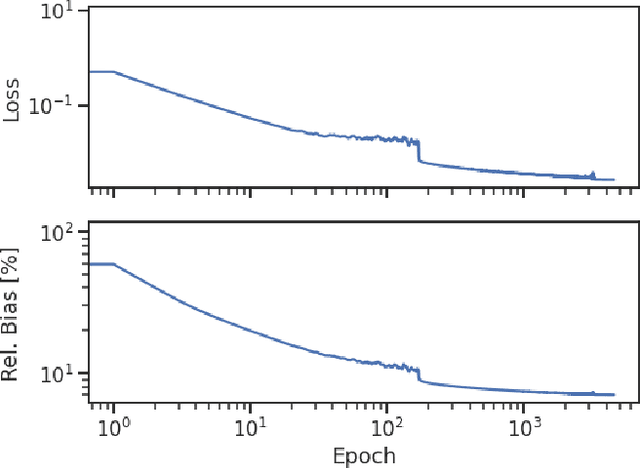
Abstract:Optical photons are used as signal in a wide variety of particle detectors. Modern neutrino experiments employ hundreds to tens of thousands of photon detectors to observe signal from millions to billions of scintillation photons produced from energy deposition of charged particles. These neutrino detectors are typically large, containing kilotons of target volume, with different optical properties. Modeling individual photon propagation in form of look-up table requires huge computational resources. As the size of a table increases with detector volume for a fixed resolution, this method scales poorly for future larger detectors. Alternative approaches such as fitting a polynomial to the model could address the memory issue, but results in poorer performance. Both look-up table and fitting approaches are prone to discrepancies between the detector simulation and the data collected. We propose a new approach using SIREN, an implicit neural representation with periodic activation functions, to model the look-up table as a 3D scene and reproduces the acceptance map with high accuracy. The number of parameters in our SIREN model is orders of magnitude smaller than the number of voxels in the look-up table. As it models an underlying functional shape, SIREN is scalable to a larger detector. Furthermore, SIREN can successfully learn the spatial gradients of the photon library, providing additional information for downstream applications. Finally, as SIREN is a neural network representation, it is differentiable with respect to its parameters, and therefore tunable via gradient descent. We demonstrate the potential of optimizing SIREN directly on real data, which mitigates the concern of data vs. simulation discrepancies. We further present an application for data reconstruction where SIREN is used to form a likelihood function for photon statistics.
Novel Light Field Imaging Device with Enhanced Light Collection for Cold Atom Clouds
May 23, 2022
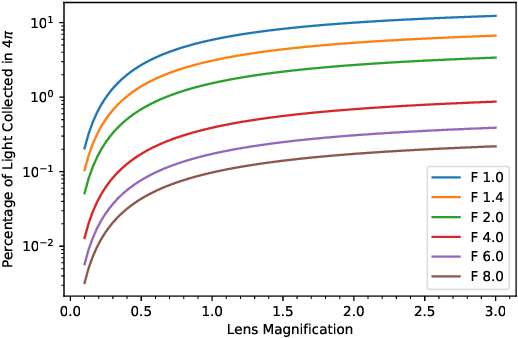
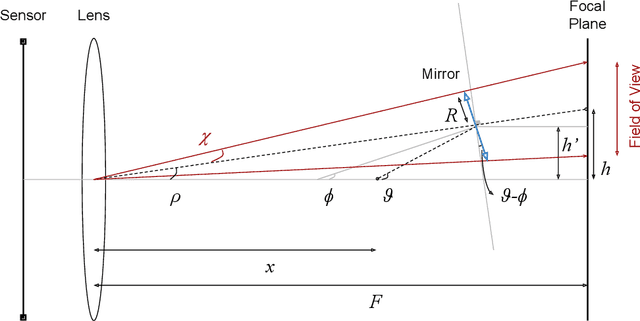
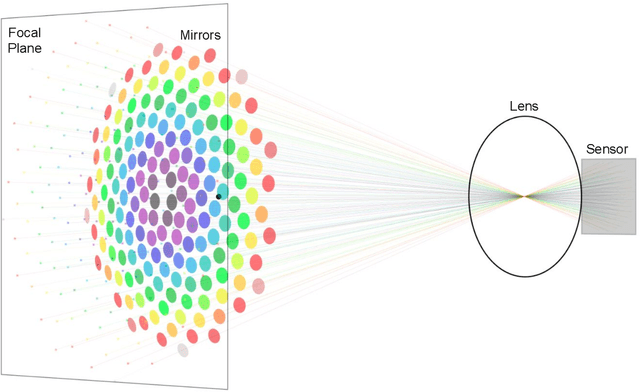
Abstract:We present a light field imaging system that captures multiple views of an object with a single shot. The system is designed to maximize the total light collection by accepting a larger solid angle of light than a conventional lens with equivalent depth of field. This is achieved by populating a plane of virtual objects using mirrors and fully utilizing the available field of view and depth of field. Simulation results demonstrate that this design is capable of single-shot tomography of objects of size $\mathcal{O}$(1 mm$^3$), reconstructing the 3-dimensional (3D) distribution and features not accessible from any single view angle in isolation. In particular, for atom clouds used in atom interferometry experiments, the system can reconstruct 3D fringe patterns with size $\mathcal{O}$(100 $\mu$m). We also demonstrate this system with a 3D-printed prototype. The prototype is used to take images of $\mathcal{O}$(1 mm$^{3}$) sized objects, and 3D reconstruction algorithms running on a single-shot image successfully reconstruct $\mathcal{O}$(100 $\mu$m) internal features. The prototype also shows that the system can be built with 3D printing technology and hence can be deployed quickly and cost-effectively in experiments with needs for enhanced light collection or 3D reconstruction. Imaging of cold atom clouds in atom interferometry is a key application of this new type of imaging device where enhanced light collection, high depth of field, and 3D tomographic reconstruction can provide new handles to characterize the atom clouds.
 Add to Chrome
Add to Chrome Add to Firefox
Add to Firefox Add to Edge
Add to Edge